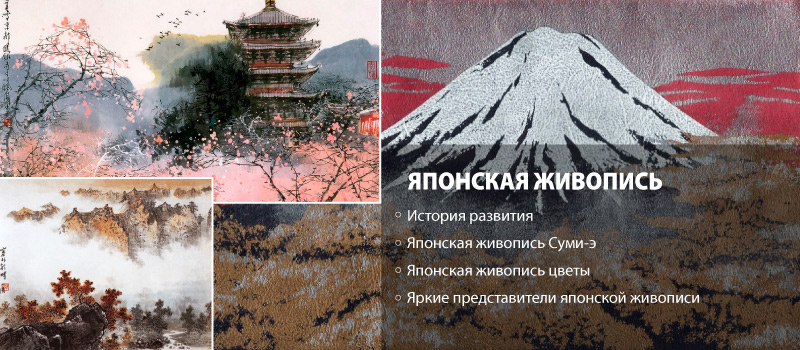
The singularity and originality of Japanese art has continued to amaze, inspire and even confuse European audiences for centuries. Indeed, in order to understand the true message and intention of the artist, you need to know at least a little about the history and culture of the Land of the Rising Sun. Here, every detail or its absence can radically change the meaning of the artwork. Even the intensity and style of the stroke are essential.
In our article we will get acquainted with the main features of Japanese painting, learn about its most striking directions and representatives, and also plunge a little into the philosophy of this country. Since here it is an integral part of art.
History of development
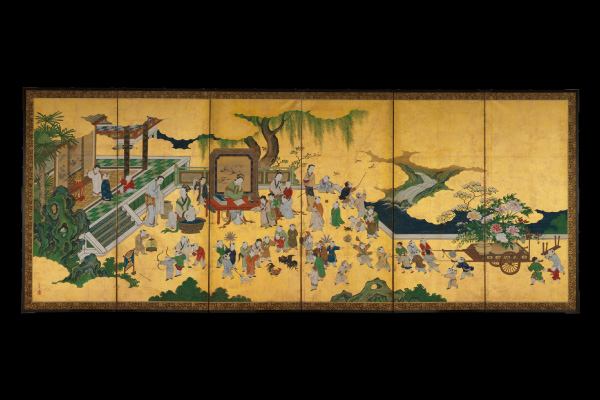
Japanese painting history of development dates back to the IIIrd century BC. At that time, rather simple geometric designs were mainly applied to pottery and bronze items. Then images began to appear on the walls of crypts, and with the advent of Buddhism, religious themes began to prevail in the visual arts. Increasingly, the deities of the new faith pantheon, as well as scenes from the life of the Master and his followers, appeared in the paintings of Japanese artists. And in addition to the picture itself, there was a text that described or supplemented the plot of the work.
It should be noted that since the inception of writing, calligraphy and painting have been closely intertwined at all stages of the Japanese art development. In this regard, line plays an important role, while color and perspective are secondary. This is evidenced by a significant number of monochrome paintings, where images are like pictograms that carry their own subtext. Moreover, this feature was entrenched as a separate style by the beginning of the XIVth century under the name sumi-e.
This technique is still widely used to paint pictures in various genres, and therefore has many forms. For this reason, we propose to get acquainted in more detail with Japanese sumi-e painting, as one of its most striking directions.
Japanese painting Sumi-e
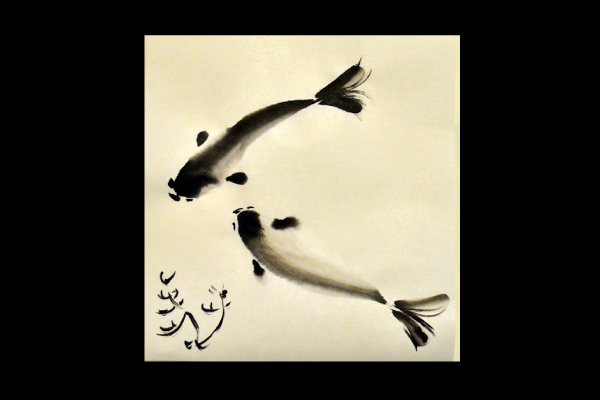
Literally the name of this monochrome painting is translated as ink and picture (sumi - ink, e - picture). This technique came to Japan in the XIIth century, when itinerant Buddhist monks began to spread Chinese culture. However, here it acquired a different, Japanese development, and was formed into a separate characteristic feature of painting of this country.
As the name suggests, in Sumi-e, artists use only black ink, playing with color saturation and creating a rich palette of gray shades. Indeed, despite its monochrome, one of the basic principles of this technique is to convey the feeling of the colors presence. It also excludes the creation of any preliminary drafts and sketches. So, the application of strokes should be worked out to automatism.
Another feature is that, unlike Western masters, the artist is not faced with the task of clearly displaying reality. The master conveys the essence of the picture by passing what he has seen through his own perception. Thus, the viewer does not see an authentic landscape of the area or a portrait of a person, but an image that arose in the artist's imagination.
The inner mood also plays a leading role in the creation of the picture. It is important to stay in a state of dispassionate contemplation, as if merging with nature as one. Perhaps that is why birds and flowers are so often found in the paintings of Japanese masters and deserve special attention.
Japanese painting with flowers
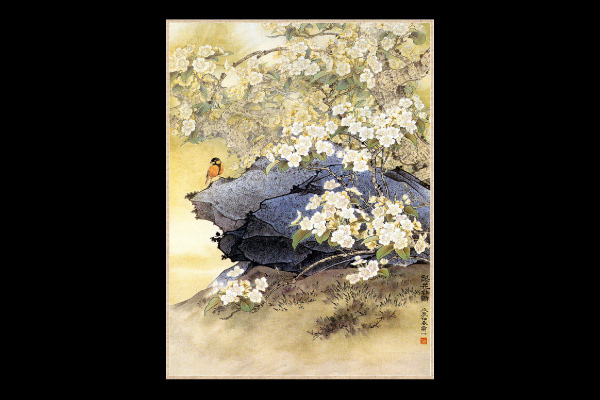
The philosophy of Japanese art is based on the search for sophistication and beauty in the surrounding reality. Well, what if not flowers is their direct embodiment. Moreover, the inhabitants of Japan are lucky enough to have the opportunity to observe many flowering plants, one of which is, of course, sakura. From ancient times to the present day, the flowering of this tree does not stop admiring its beauty, which inspires and encourages poets, musicians and artists.
But in addition to sakura, this country has many more beautiful plants and flowers that have found their meaning and symbolism in the art and philosophy of the Japanese. For example, chrysanthemum is considered a symbol of the sun, abundance and perfection. And the image of this flower with 16 petals has been an imperial seal for several centuries.
Peonies, which for a long time were even forbidden to be exported outside the country, deserve special attention. They represent bravery and courage in Japanese culture, and were often depicted on samurai armor. Also, hydrangea belongs to the list of revered and common flowers in painting. According to legend, on the day of Buddha's birthday, it rained from the sky with these beautiful flowers. Therefore, it is not surprising that the image of this flower became characteristic of the sumi-e, which came with the Buddhist monks.
In addition to the above flowers, there are others with their own meaning: irises (heroism and belligerence), hibiscus (abundance), wild orchid (chastity), camellia (firmness and longevity), wisteria (youth and grace), morning glory (fleeting and uniqueness), lily (openness) and of course a rose (love). All of them have become an important part of Japanese painting, both as the main element of the picture, and carrying their own meaning in the details of the plot artworks.
Outstanding representatives of Japanese painting
It is possible to talk about Japanese painting for an infinitely long time. So unique and multifaceted it is in its manifestations. But we all know that it is better to see once than hear a hundred times. Therefore, we present to your attention several works of the brightest artists of the Land of the Rising Sun, whose paintings became known far beyond the borders of their homeland.
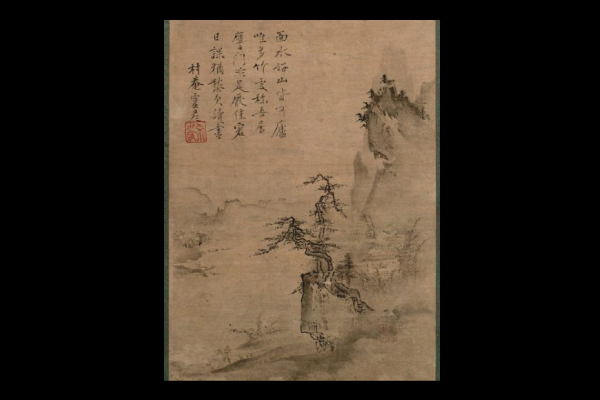
“Reading in the Bamboo Grove,” Tensho Shubun. The artist was the founder of the Japanese painting Sumi-e and made a significant contribution to its spread.
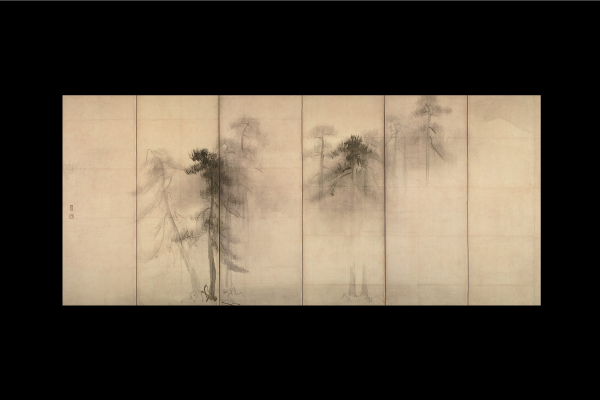
"Pine Trees", Hasegawa Tohaku. The basis of the master's works are simple and laconic landscapes. With their help he developed his own individual style and even created his own school, named after him - Hasegawa.
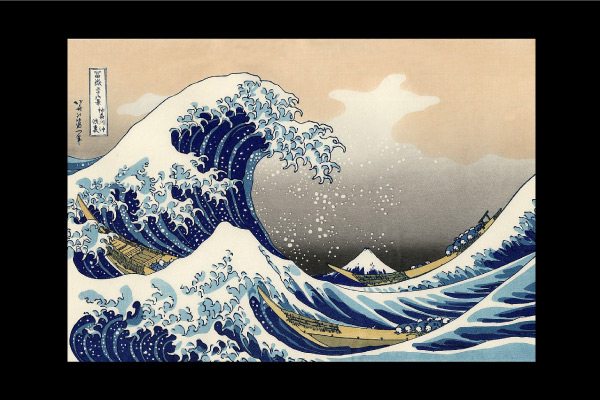
“The Great Wave of Kanagawa”, Katsushika Hokusai. The author of the picture began to diligently engage in painting only at the age of 60. Even though, his work attracted the attention of such prominent European artists as Vincent Van Gogh, Claude Monet and Pierre Auguste Renoir. Thus, he had a certain influence on their work.
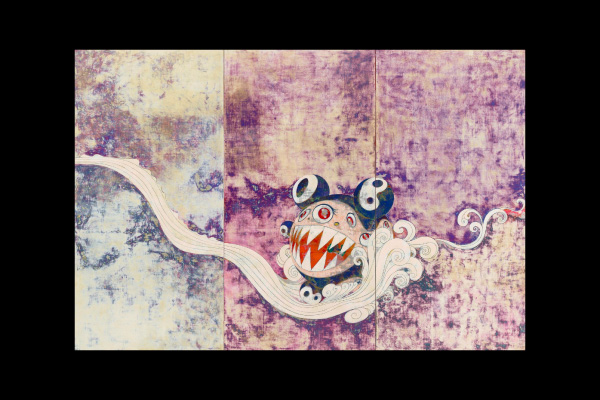
"727", Takashi Murakami. The artist is one of the most popular living representatives of Japanese art. His works are characterized by a mixture of traditional motives with modern pop culture.
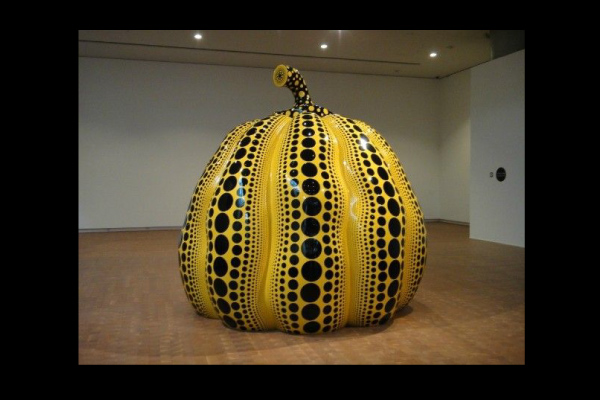
"Pumpkin", Yayoi Kusama. The author of the picture is a famous contemporary artist who works in a variety of different techniques. However, all of her work is united by the use of repeating patterns that create a certain visual language.

The earliest work of Leonardo da Vinci
A small painted tile caused quite a stir among the scientists of the art world. This is because some scholars believe that the recently discovered work is Leonardo da Vinci's earliest known work
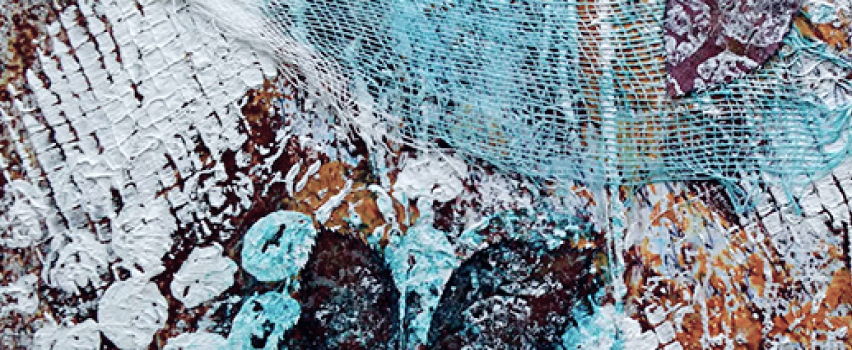
Interesting facts about painting
Paintings hold the secrets of the creator. Sometimes we manage to solve them, but many of them continue to be riddles, or simply stay unnoticed.












Thank you, your review has been sent successfully.
It will be posted on the site after moderation.